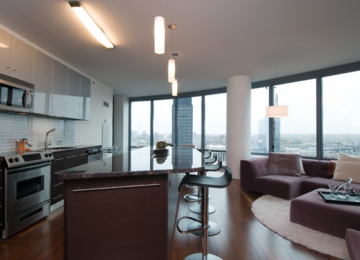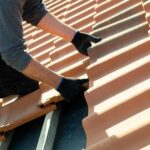Attic ladders may seem just a simple tool for attic access, but they are essential and beneficial when you find the appropriate one. There are several variations of attic ladders, from automated to timber ladders, so there are various options to choose the perfect one for your home.
Choosing the best attic ladder for your household requires various considerations to ensure safety and cater to your house’s needs. Here are some of them:
Type of Roof You Have and its Dimensions
Roofs have different shapes and sizes, like truss, rafter, or conventional, to suit your house needs. Each type of roofing requires a specific attic ladder type, just as a concertina ladder is perfect for limited spaces like truss roofs.
It is also vital to consider the dimensions of your space to know which attic ladder will fit best. Measure and identify the floor-to-ceiling height, swinging and landing space clearance, and opening size. A typical proportion of attic ladders is 22.5 x 54 inches, so ensure sufficient space without compromising the structural integrity of your home.
Budget and Installation
Attic ladders vary in price depending on the features and material of the product. An excellent attic ladder supplier offers premium ladders of diverse types, materials, and features with flexible prices for your budget. The warranty of products is also noteworthy to ensure that the ladders you buy are not defective and safe to use.
In installation, leading attic ladder manufacturers design their products to become do-it-yourself- (DIY) friendly with comprehensive and clear step-by-step instructions. However, if your space requires more labour, like sawing and squaring, trusted attic ladder suppliers have a network of specialist installers recommended for you.
Material and Load Capacity
For functionality, budget flexibility, or aesthetic purposes, attic ladders come in different materials, supporting various loading capacities. Here are some common materials and their pros and cons:
- Wood-attic ladders made of wood are the least expensive and sturdy but are weak against humidity and wood-destroying pests like termites.
- Aluminium- lightweight and resistant to moisture and termites, but less sturdy and steady, and conducts heat and electricity.
- Steel- sturdier than aluminium, supports heavier weights, is moisture and pest-resistant but bulky and heavy, and conducts heat and electricity.
Building Code Compliance and Safety of Utility and Service Lines
There are existing building codes guiding the proper installation of attic ladders. One example is the International Residential Code (IRC) Section R807.1 and M1305.1.3, related to requirements like standards for opening size, height, and others.
You must also consider utility and service lines in the building and refrain from damaging any pipes or cables during installation.
Conclusion
Are you looking for an attic ladder manufacturer that can cater to your needs? If so, then Attic Ladder Warehouse can help you.
Attic Ladder Warehouse is Australia’s innovative one-stop shop for all your attic needs, with a wide range of premium ladders and accessories. Ensure excellent service, economical pricing, and unmatched after-sales support, and contact Attic Ladder Warehouse today!











